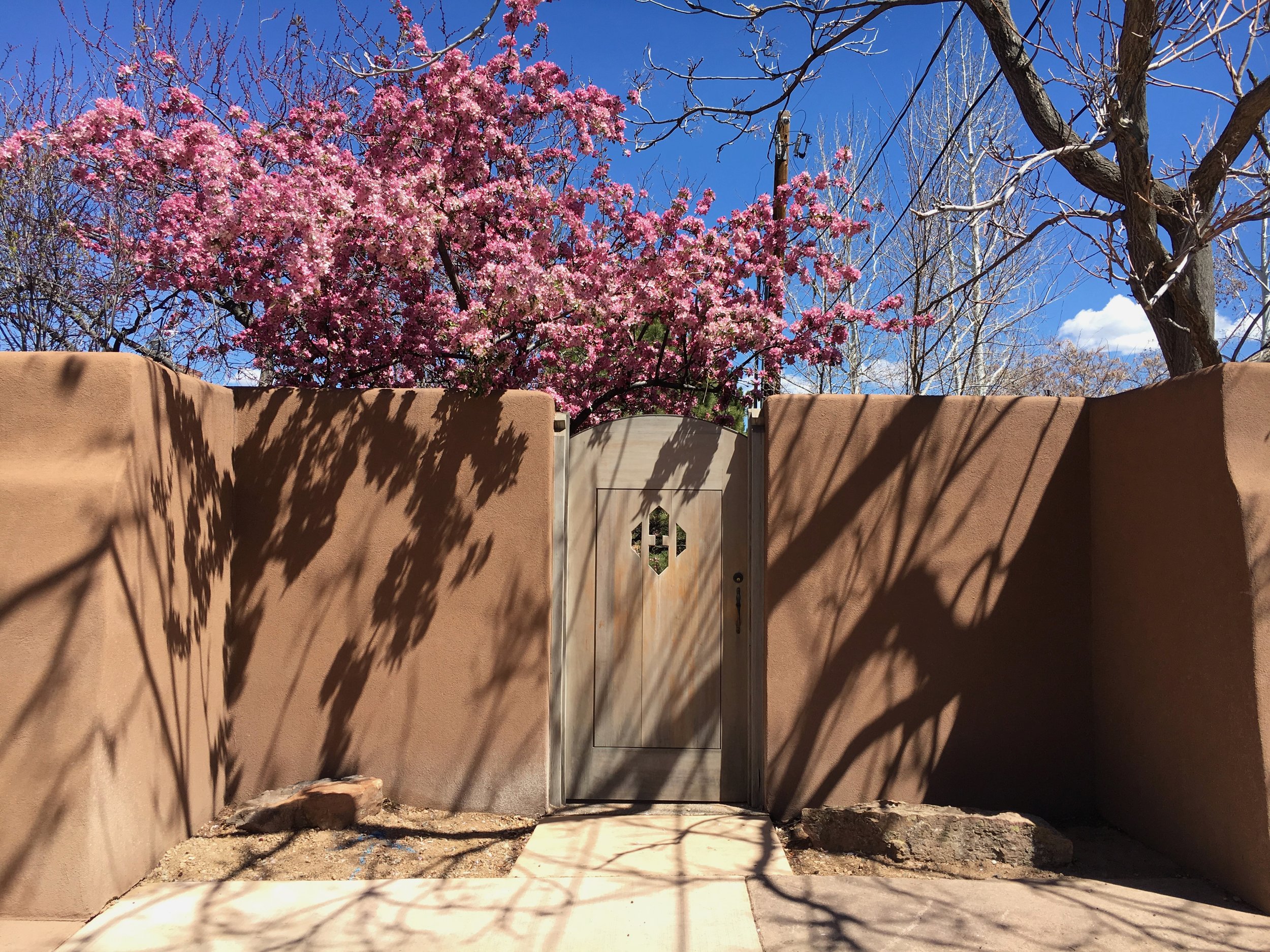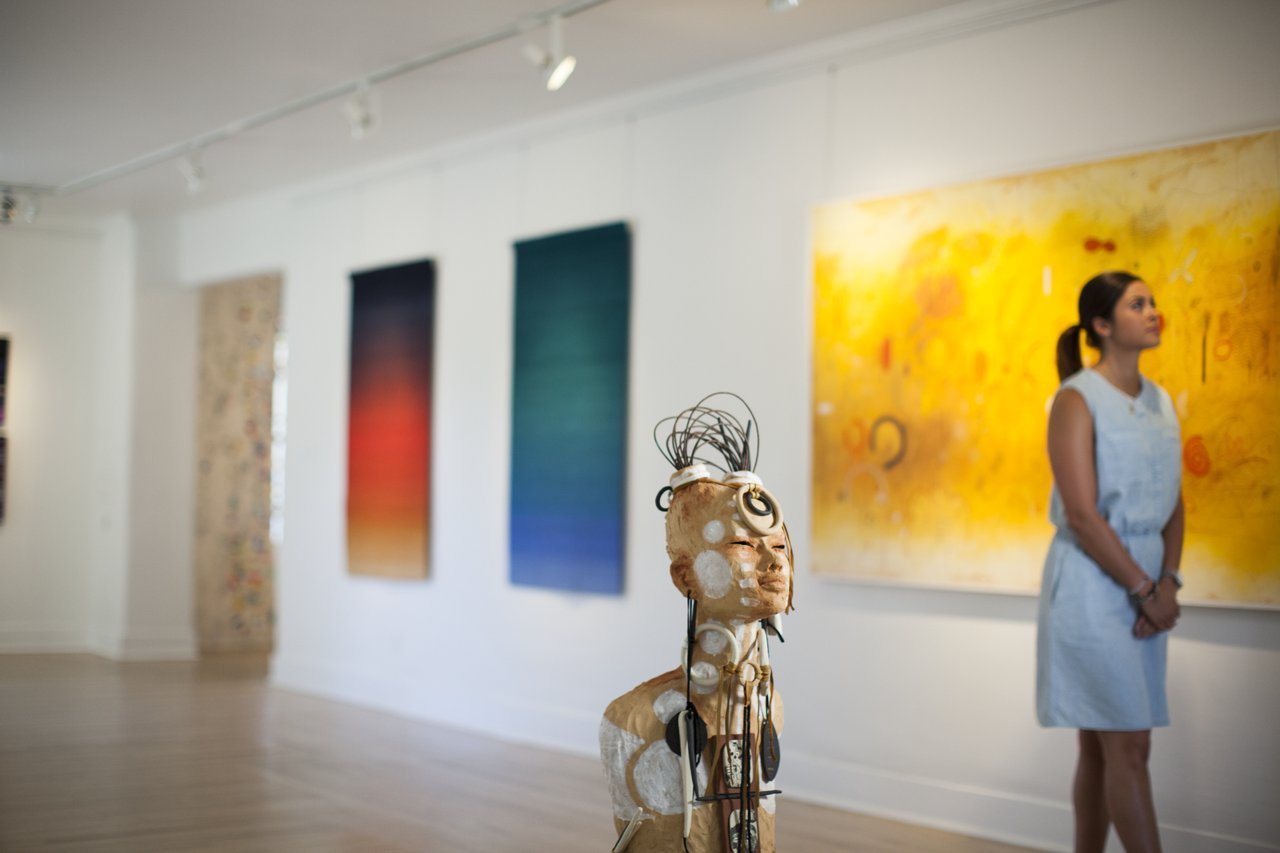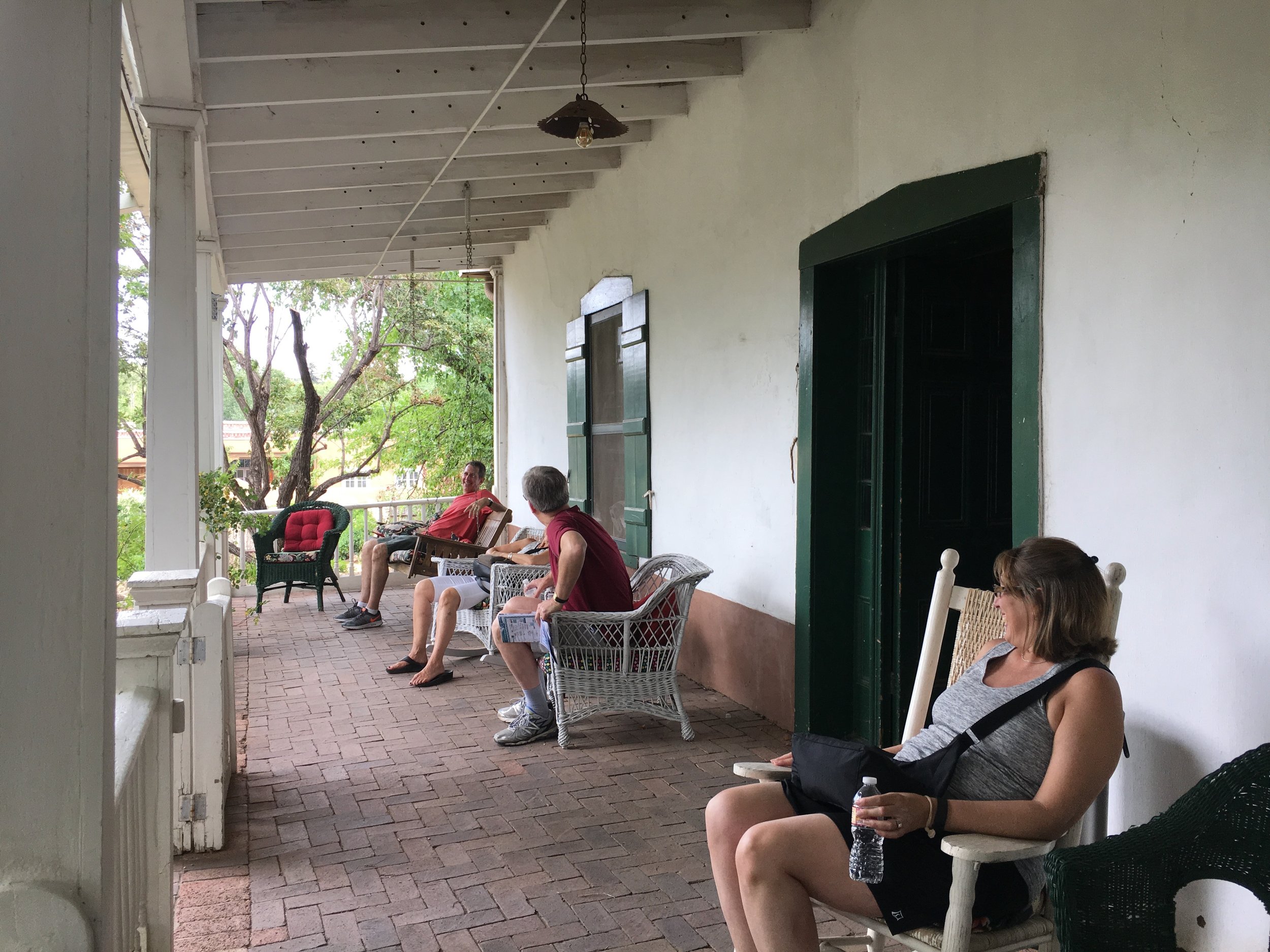Why you should visit Santa Fe's Canyon Road Arts District
Canyon Road is consistently ranked among the top things to do in Santa Fe, and yet it also has a reputation for being a highly commercial arts district that’s more about shopping than a fine art experience. Well, we’ve made it something of a mission to change that, because there is no place like Canyon Road anywhere else in the country! If you come to Santa Fe, don’t miss Canyon Road.
After spending hours touring Canyon Road over the past two years, I’ve developed a huge soft spot for it. Not only is it quintessentially Santa Fe; it also offers a more varied and nuanced experience than one might think. This historic arts district may be rooted in tradition, but it is steadily evolving and offers an unforgettably rich visual experience to anyone visiting the City Different. It has become my favorite neighborhood and arts district in Santa Fe, and I love ensuring that others experience it for everything it’s worth, as well. Here are just five reasons to love Canyon Road in Santa Fe.
The atmosphere
Canyon Road is undeniably charming. The galleries are housed in low, rambling, historic adobe homes; the sidewalks are lined with vibrant hollyhocks and coyote fences; the painted doors and windows are some of the most photogenic you’ve ever seen. There are hidden sculpture gardens to explore and patios to enjoy while sipping a glass of wine or a margarita. And of course, there’s art everywhere! For those of us who seek out memorable sensory experiences, Canyon Road won’t disappoint.
The neighborhood feel
Canyon Road was largely residential at one time, and it has somehow managed to maintain that friendly neighborhood feel. As you saunter from gallery to gallery, you’ll see locals who live nearby out jogging, walking their pups, and riding bikes.
Wander inside any gallery space, and you’ll almost always be greeted with a smile. The aloof art associate is a rare breed here. Most everyone is warm, chatty, and as long as they’re not occupied with pressing business, they’re happy to geek out with you over the work on view. At this point, I’ve walked Canyon Road so many times I do feel like I’m visiting old friends. Often, before tours, I’ll pop in just to say hello and catch up with whoever’s on gallery duty.
The artwork
It’s said that there are about 200 galleries in downtown Santa Fe, and around 80 of those galleries—almost half!—are right on Canyon Road. Now, I’m going to be honest here: not every work of art is created equal, and that’s true on Canyon Road too.
That said, Canyon Road is home to some amazing stuff, and the variety of artwork is delightfully staggering. Where else can you see exquisite Navajo weavings, vibrant lithographs by Marc Chagall, classic black-on-black pottery by Maria Martinez, contemporary sculpture by Rose B. Simpson, and contemporary mixed-media work by local artists all within a couple of blocks? It’s aesthetic heaven, and there’s enough variety to make everyone in your group happy.
If you’re not sure where to start, we’d love for you to join us on our Canyon Road Arts District tour.
The food
A couple of delightful restaurants in Santa Fe are nestled at the end of Canyon Road, in the perfect spot for a restorative snack or a happy hour indulgence after gallery going. The Teahouse, a local favorite, boasts over 150 different types of tea, along with tasty scones (gluten-free scones, even!) and other sweet treats. They also offer a full menu for breakfast, lunch, and dinner.
For classic Canyon Road ambiance, hit the recently renovated El Farol. Established in 1835, the oldest restaurant in Santa Fe now features a new menu and a freshly updated interior that highlights historic murals painted by the artists who lived, worked, and reveled on Canyon Road during the early 20th century. Sit on the front patio and people watch, or catch a flamenco show later in the evening.
The pace
Some visitors to Santa Fe set aside an afternoon to "do" Canyon Road. I personally wouldn’t recommend that approach, even if you only have a limited amount of time to explore the area. Part of what makes Canyon Road so special is that, if you let it, it encourages you to slow down and enjoy yourself.
I know, I know – when you see all of those galleries, the panic sets in and you feel like you have to see everything. I can almost guarantee that you'll have an even better time if you saunter. Listen to what your surroundings are telling you. That historic sidewalk? You'll trip at least once if you hustle. Those oh-so-picturesque doors and windows? Go ahead – stop and snap a photo. That almost-secret garden? Wander in and sit for a moment. Investigate open gallery doors; wander down alleyways. Take a moment to sit and savor a drink on a patio, or to stop and watch an artist at work.
For some of us, it can be a real challenge to slow down, but Canyon Road is the perfect place to practice a little mindfulness and stop and smell the roses – figuratively and, sometimes, literally.
A final note on Canyon Road's history
While scenic and picturesque, Canyon Road also carries a long history of cultural and economic displacement, and we always try to acknowledge this on our tours of the area.
The brief, CliffsNotes version of Canyon Road’s history goes a little something like this:
Originally, it was a trail dating to the 13th century that lead from Ogha Po'oge, a pueblo located in the area of present-day Santa Fe, into the mountains.
After 1610, when Santa Fe was founded by Pedro de Peralta, Spanish colonists began building an irrigation ditch (Acequia Madre, which still flows today), small homes, and agricultural gardens along the trail.
Fast forward to the mid 19th century: New Mexico became a United States territory in the aftermath of the Mexican-American War. More people came to town, including merchants who made use of the Santa Fe Trail. One of them, James L. Johnson, bought and expanded an old adobe home that’s still on Canyon Road today. Locals know it as El Zaguan, and it’s one of our favorite spots to stop and rest during tours.
Toward the end of the century, the railroad arrived in Santa Fe, ushering in curious travelers. Many were artists and writers suffering from tuberculosis – the area’s dry, clean air was thought to be curative. Others came to visit friends. Enchanted by the light and landscape, some chose to stay, and several trickled onto Canyon Road. Some bought old adobe homes and restored them; others built their own, transforming the area into a rumble-tumble bohemian artist colony.
The next big change happened in the 1960s, when the area was re-zoned and commercial art galleries began to move in at an increasingly rapid rate. Today, it’s pretty much all galleries, restaurants, and upscale vacation homes. Canyon Road – like Santa Fe, and like New Mexico – has a nuanced and complex history that continues to change and evolve.






